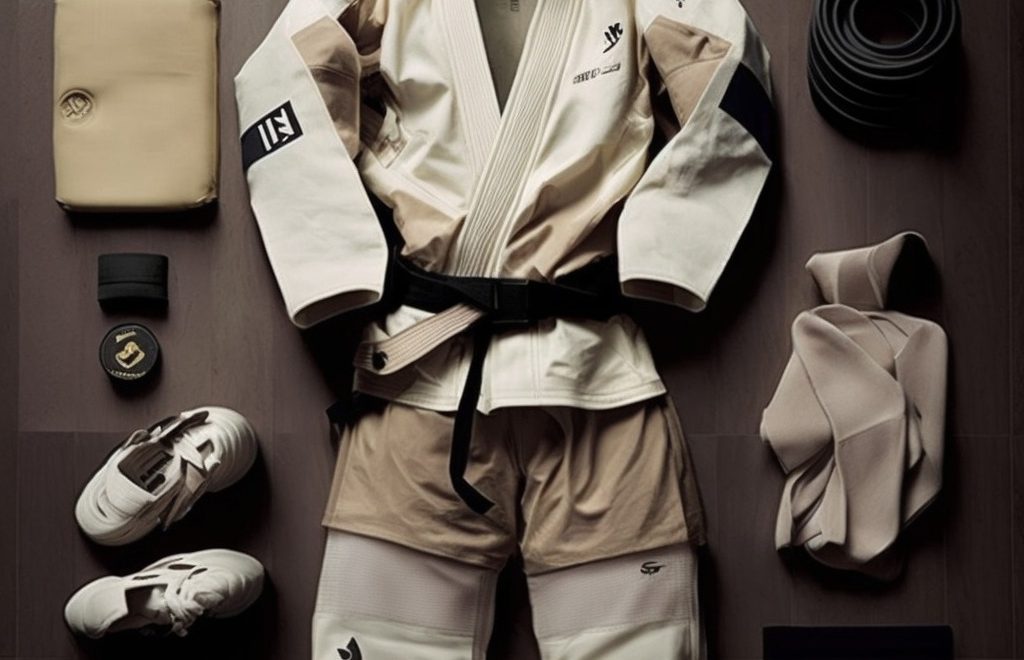Judo Equipment, Equipments List,Training, What is Judoka ? 👇⏬
Gear Up for Judo Success: Essential Equipment for Judokas
Are you ready to unleash your inner warrior on the judo mat? Well, before you put on that crisp white gi and step into the dojo, let’s talk about the essential judo equipment you need as a judoka. From the moment you enter the world of judo, having the right gear can make all the difference in your performance and safety.

First things first, let’s focus on the core piece of equipment – the judo gi. This traditional uniform consists of a jacket, pants, and a belt. The gi is not just any ordinary attire; it is designed with durability and functionality in mind. Made from thick, sturdy fabric, it can withstand intense grappling and throwing techniques. So, when you wear your gi, you’re not just wearing clothing, but a symbol of dedication and respect for the art of judo.
To protect yourself during training or competition, investing in quality protective gear is imperative. One of the most crucial items is the judo belt, also known as an obi. It not only holds your gi together but also signifies your rank and progress within the sport. The color of your belt represents the level of expertise you have attained, starting from white for beginners and progressing through various colors until you reach the prestigious black belt.
Now, let’s move to the next essential item on our list – a pair of judo shoes or zoris. These lightweight, slip-on sandals provide the necessary grip and traction on the mat while protecting your feet from potential injuries. They are perfect for those moments when you need to quickly move around or perform dynamic footwork during practice or competition.
Last but certainly not least is the judo mat itself. Made from high-density foam, these mats provide a safe and cushioned surface for training and landing. They absorb impact, reducing the risk of injuries and ensuring a comfortable practice environment. Whether you’re executing powerful throws or practicing ground techniques, having a top-notch judo mat is essential for both safety and performance.
When it comes to judo equipment, each item plays a crucial role in your journey as a judoka. From the durable gi to the protective belt, the functional shoes, and the safe mat, investing in high-quality gear ensures that you can perform at your best while staying safe. So, gear up, step onto the mat, and let the spirit of judo guide you on your path to greatness.
Judo Equipments List

Are you ready to step onto the judo mat and start your journey in this exciting martial art? You’ll need the right gear to get started, and that’s where a judogi comes in. A judogi is the traditional uniform worn by judo practitioners. It consists of three main components: a jacket, pants, and a belt. Let’s take a closer look at each part.
The jacket, called an uwagi, is made of heavy-duty fabric to withstand the rigors of training and competition. It has a thick collar that provides grip for throws and grappling techniques. The sleeves are wide and roomy, allowing for freedom of movement. The jacket is usually white, but some organizations may allow blue or other colors for competitions.
Next, we have the pants, known as zubon. Like the jacket, they are made of durable material to endure the demands of judo training. The pants have a drawstring waistband to ensure a secure fit. They extend down to just above the ankles, allowing for easy footwork and mobility during throws and groundwork.
Completing the judogi ensemble is the belt, or obi. The color of the belt indicates the wearer’s rank in judo. Beginners typically start with a white belt and progress through various colored belts as they advance in skill and knowledge. The belt is tied around the waist and serves as a symbol of the practitioner’s dedication and progression in the art.
When choosing a judogi, it’s important to consider factors such as size, weight, and durability. A well-fitting judogi should allow for comfortable movement while maintaining a professional appearance. Additionally, different judo organizations may have specific requirements regarding the design and thickness of the judogi for competitions.
Remember, a judogi is more than just a uniform; it’s a representation of the principles and traditions of judo. It’s a garment that connects you to a long lineage of martial artists who have come before you. So, embrace the judogi as you step onto the mat and embark on your journey in the art of judo.
Judo Training Equipment
Are you a judoka looking to enhance your training sessions? If so, you’ve come to the right place. In this article, we’ll dive into the world of judo training equipment and explore how it can benefit your practice. Whether you’re a beginner or an experienced judoka, having the right equipment can make a significant difference in your training.
One essential piece of judo training equipment is the judogi, also known as the judo uniform. The judogi consists of a jacket, pants, and a belt. It is typically made from a heavy-duty cotton fabric to withstand the rigors of training and competition. The judogi is designed to be durable yet comfortable, allowing you to move freely while maintaining a professional appearance. Wearing the judogi not only signifies your commitment to the art of judo but also helps you develop proper technique and grips.
Another crucial piece of equipment for judoka is the tatami, which refers to the mat used in judo training. Tatami mats come in various sizes and thicknesses, providing cushioning and grip to prevent injuries. These mats are specifically designed to absorb impact, reducing the risk of joint and muscle strain. Training on tatami mats also allows judoka to practice throws and groundwork with confidence, knowing that they have a safe and supportive surface.
In addition to the judogi and tatami mats, there are other training aids that can help improve your judo skills. For example, judo dummies are often used to practice throws and grappling techniques when a partner is unavailable. These dummies are designed to simulate the weight and resistance of a real opponent, allowing judoka to refine their movements and timing.
Furthermore, strength and conditioning equipment such as kettlebells, medicine balls, and resistance bands can be valuable additions to your judo training routine. These tools help develop core strength, explosive power, and overall conditioning, which are essential for executing powerful throws and maintaining stability during matches.
Investing in the right judo training equipment is crucial for any serious judoka. The judogi, tatami mats, dummies, and strength and conditioning tools all play a significant role in improving your technique, preventing injuries, and enhancing overall performance. So, gear up with the right equipment, step onto the tatami, and let your judo skills shine.
Judo Equipment Maintenance

Judo Equipment Maintenance: Keeping Your Judogi in Top Shape
When it comes to judo, having the right equipment is crucial for success on the mat. One of the most important pieces of equipment in judo is the judogi, the traditional uniform worn by practitioners. To ensure that your judogi remains in top shape and lasts for a long time, proper maintenance is essential. In this article, we will discuss some key tips for maintaining your judogi.
First and foremost, it’s important to wash your judogi regularly. After each practice or competition, make sure to remove any dirt or sweat from the fabric. Using a mild detergent, hand wash your judogi in cold water. Avoid using hot water as it may cause shrinkage. Once washed, hang your judogi to air dry naturally. This will prevent any damage and help preserve its quality.
In addition to regular washing, it’s crucial to inspect your judogi for any wear and tear. Check the seams, cuffs, and collar for any loose threads or fraying. If you notice any issues, repair them promptly to prevent further damage. A well-maintained judogi not only looks good but also ensures safety during training and competitions.
Furthermore, storing your judogi properly is vital for its longevity. After washing and drying your judogi, fold it neatly and store it in a breathable bag or a dedicated judo gear bag. Avoid leaving your judogi in a damp or humid environment, as it can promote mold and odor. By keeping it clean and dry when not in use, you’ll extend the lifespan of your judogi.
Lastly, remember that your judogi represents your dedication to the sport. Take pride in wearing it and treat it with respect. Regular maintenance not only preserves the quality of your judogi but also reflects your commitment to judo.
Maintaining your judogi is essential for its longevity and your overall judo experience. By following these simple tips, you can keep your judogi in top shape and ensure that it serves you well during training and competitions. So, take care of your judogi, and it will take care of you on the mat!
What is Judoka ?
Are you familiar with judo? If not, let me introduce you to the world of judoka. A judoka is an individual who practices and competes in the martial art of judo. But what exactly does being a judoka entail?
In its essence, judo is a dynamic and captivating sport that originated in Japan. It emphasizes the use of technique and leverage rather than brute strength. A judoka learns how to effectively throw their opponents to the ground and, if necessary, immobilize them with locks or chokes. The word “judo” itself translates to “the gentle way,” which reflects the philosophy behind this martial art.
As a judoka, one must possess various attributes and skills to excel in this discipline. Physical fitness is crucial, as judo requires strength, flexibility, and agility. Additionally, mental fortitude is equally important. A judoka must develop a sharp focus, discipline, and the ability to adapt to different situations on the mat.
The journey of a judoka starts with learning the basic techniques and principles of judo. These include throws, pins, joint locks, and chokes. Through consistent training, a judoka hones their skills and refines their technique. They learn how to read their opponent’s movements, anticipate their actions, and execute effective strategies.
The practice of judo extends beyond the physical aspect. Judo also instills important values such as respect, perseverance, and humility. Judokas are encouraged to maintain good sportsmanship, both on and off the mat. This code of conduct fosters a sense of camaraderie among practitioners and promotes personal growth.
Competitions play a significant role in the life of a judoka. They provide an opportunity to test one’s skills and measure progress against fellow practitioners. From local tournaments to international championships, judokas can showcase their abilities and strive for victory.
A judoka is more than just a practitioner of judo. They embody the spirit of this martial art and embrace its principles. With dedication, discipline, and a thirst for knowledge, a judoka can embark on a transformative journey that goes beyond the mat. So, are you ready to step onto the tatami and become a judoka?
Judo Equipment Facts
Are you fascinated by the dynamic martial art of judo? Whether you’re a beginner or an experienced practitioner, having the right judo equipment is essential to enhance your performance and ensure your safety on the mat. In this article, we’ll explore the key pieces of judo equipment that every judoka should be familiar with.
One of the most important components of a judoka’s gear is the judogi, the traditional uniform worn during practice and competitions. Made from heavyweight cotton, the judogi consists of a jacket (uwagi), pants (zubon), and a belt (obi). The jacket features reinforced stitching to withstand the rigor of training and gripping techniques. The pants are designed to be durable and allow for ease of movement. The color of the belt signifies the wearer’s rank within the judo system, with different colors indicating varying levels of expertise.

In addition to the judogi, a pair of high-quality judo shoes can greatly enhance your performance. Judo shoes provide grip and stability on the mat while protecting your feet from potential injuries. Look for shoes with a non-slip sole and ankle support to ensure maximum safety and agility during training and competitions.
Another crucial piece of judo equipment is the judo mat, also known as the tatami. The tatami provides a safe and cushioned surface for judo practitioners to train on. It absorbs impact, reducing the risk of injuries when practicing throws and takedowns. High-quality tatami mats are often made from compressed foam or rubber, offering excellent shock absorption properties while maintaining stability.

To protect yourself during intense sparring sessions, investing in a reliable set of judo protective gear is essential. Judo practitioners commonly wear a mouthguard to protect their teeth and gums, as well as ear guards to prevent cauliflower ear—a common condition caused by repeated impacts to the ears. Additionally, a sturdy pair of knee pads can provide extra cushioning and support during ground techniques and breakfalls.
Remember, having the right judo equipment not only ensures your safety but also enhances your performance on the mat. By investing in high-quality gear such as a judogi, judo shoes, tatami mats, and protective equipment, you’ll be well-equipped to take your judo skills to new heights.
If you’re interested in martial arts equipment, you can check out my page and get informed.




What’s up to every one, it’s truly a good for me to pay a quick visit this web site, it consists of useful Information.